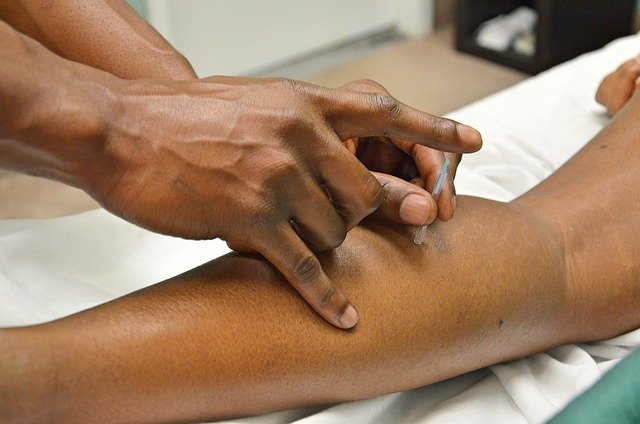Understanding Angioedema Treatment: Managing Swelling and Discomfort
Angioedema is a condition characterized by rapid swelling beneath the skin or mucous membranes, often affecting the face, tongue, and other parts of the body. This article explores the various treatment options available for managing angioedema, focusing on medications and strategies to alleviate symptoms and prevent recurrences.

What are the primary drugs used to treat angioedema?
Several medications are commonly prescribed to manage angioedema:
-
Antihistamines: These are often the first-line treatment for mild to moderate cases of allergic angioedema. They work by blocking histamine, a substance released during allergic reactions that contributes to swelling.
-
Corticosteroids: For more severe cases, oral or injectable corticosteroids may be prescribed to reduce inflammation and swelling.
-
Epinephrine: In cases of severe angioedema, especially when it affects breathing, epinephrine (adrenaline) may be administered via an auto-injector to quickly reduce swelling and open airways.
-
Specific medications for hereditary angioedema: For those with hereditary angioedema, specialized drugs such as C1 inhibitors, kallikrein inhibitors, or bradykinin receptor antagonists may be prescribed to prevent or treat attacks.
How can swelling in the face and tongue be managed?
When angioedema affects the face and tongue, prompt treatment is essential to prevent potential airway obstruction. Here are some management strategies:
-
Seek immediate medical attention if swelling affects breathing or swallowing.
-
Apply cold compresses to the affected areas to help reduce swelling and discomfort.
-
Elevate the head while resting or sleeping to minimize fluid accumulation in facial tissues.
-
Take prescribed medications as directed by your healthcare provider.
-
Avoid known triggers, such as certain foods or medications, if the cause is identified.
-
For chronic or recurrent angioedema, work with an allergist or immunologist to develop a long-term management plan.
What are the long-term treatment options for chronic angioedema?
For individuals experiencing chronic or recurrent angioedema, long-term management strategies may include:
-
Prophylactic medications: Daily antihistamines or other preventive drugs may be prescribed to reduce the frequency and severity of attacks.
-
Immunotherapy: In cases where specific allergens are identified, allergen immunotherapy (allergy shots) may be recommended to desensitize the immune system.
-
Lifestyle modifications: Identifying and avoiding triggers, maintaining a healthy diet, and managing stress can help reduce the likelihood of angioedema episodes.
-
Regular monitoring: Periodic check-ups with an allergist or immunologist to adjust treatment plans as needed.
-
Emergency preparedness: Carrying an epinephrine auto-injector and wearing a medical alert bracelet for quick identification of the condition in emergencies.
Are there any non-medication approaches to managing angioedema?
While medications play a crucial role in treating angioedema, several non-pharmacological approaches can complement treatment:
-
Trigger avoidance: Identifying and avoiding known triggers, such as specific foods, medications, or environmental factors, is crucial in preventing angioedema episodes.
-
Stress management: Since stress can exacerbate symptoms in some individuals, practicing relaxation techniques like meditation or yoga may be beneficial.
-
Cool compresses: Applying cool, damp cloths to affected areas can help reduce swelling and provide relief.
-
Dietary modifications: In cases where food allergies are suspected, working with a dietitian to create an elimination diet and identify potential triggers can be helpful.
-
Hydration: Maintaining proper hydration can support overall health and may help reduce the severity of symptoms during an episode.
How is angioedema treatment tailored for different patient groups?
Treatment approaches for angioedema may vary depending on the patient’s age, overall health, and specific type of angioedema:
-
Children: Treatment for pediatric patients often focuses on identifying and avoiding triggers, using antihistamines, and having an emergency action plan in place.
-
Pregnant women: Some medications used to treat angioedema may not be safe during pregnancy. Treatment plans are carefully tailored to balance the mother’s health with fetal safety.
-
Elderly patients: Older adults may be more susceptible to medication side effects, so treatment plans are adjusted accordingly, often starting with lower doses and monitoring closely.
-
Patients with hereditary angioedema: These individuals require specialized treatment plans, often involving prophylactic medications and on-demand treatments for acute attacks.
-
Individuals with comorbidities: Treatment approaches may need to be modified for patients with other health conditions to avoid potential drug interactions or complications.
In conclusion, angioedema treatment involves a multifaceted approach, combining medications, lifestyle modifications, and preventive strategies. The specific treatment plan depends on the underlying cause, severity of symptoms, and individual patient factors. Working closely with healthcare providers, particularly allergists or immunologists, is essential for developing an effective management strategy and ensuring the best possible outcomes for those affected by angioedema.
This article is for informational purposes only and should not be considered medical advice. Please consult a qualified healthcare professional for personalized guidance and treatment.






